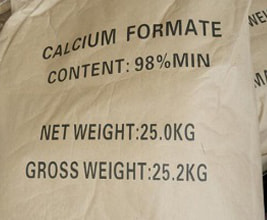Key Applications and Buyer Considerations for Ethylene Gas
Understanding ethylene gas (C2H4) is essential for various industries, especially those focusing on agriculture, chemical production, and manufacturing processes. Ethylene, a colorless gas with a sweet odor, is primarily used in the production of plastics, textiles, and more. This blog will explore the key applications of C2H4 gas and the critical considerations buyers must take into account when sourcing this versatile compound.
The company is the world’s best c2h4 gas supplier. We are your one-stop shop for all needs. Our staff are highly-specialized and will help you find the product you need.
Applications of Ethylene Gas in Industry
First and foremost, ethylene gas plays a pivotal role in the chemical manufacturing sector. According to Sarah Johnson, a chemical engineer at Sigma Chemicals, “Ethylene is often referred to as the 'building block of the petrochemical industry.' It is the primary feedstock for the production of polyethylene, one of the most widely used plastics in the world.”
Another significant application of ethylene lies in agriculture, particularly in the regulation of fruit ripening. Dr. Linda Rodriguez, a plant biologist, explains, “Farmers utilize ethylene gas to control the timing of harvests. For instance, ethylene can expedite the ripening process in bananas and tomatoes, ensuring that produce reaches consumers at peak freshness.”
Ethylene in the Manufacturing Sector
In the realm of manufacturing, C2H4 gas serves as a vital intermediary in synthesizing numerous chemical compounds. Tom Baker, a manufacturing consultant, notes, “Manufacturers often leverage ethylene to produce goods ranging from antifreeze and solvents to detergents. Its versatility makes it indispensable in various manufacturing processes.”
Explore more:Understanding C2H4 Gas: Uses and Applications
Key Considerations for Buyers of Ethylene Gas
Is C2H4 Gas the Future of Sustainable Energy?
Future of C2H4 Gas: Trends and Innovations for 2025
Unlocking the Secrets of C2H4 Gas Uses and Benefits
10 Essential Facts About Titanium Dioxide Anatase You Need to Know
How Calcium Formate Enhances Cement Stability: Key Benefits Explained
How Does Calcium Formate for Agricultural Applications Benefit Crops?
When procuring C2H4 gas, buyers should prioritize quality and safety. Mark Patel, a sourcing expert in the chemical industry, states, “Assessing the purity of ethylene gas is crucial. Impurities can lead to adverse reactions in manufacturing processes, negatively impacting product quality.”
Furthermore, buyers should consider the supply chain dynamics that influence the availability of C2H4 gas. Alex Chen, a market analyst, opines, “With fluctuations in oil prices and geopolitical events, the procurement of ethylene can be subject to volatility. Establishing a reliable supplier network is essential for ensuring consistent supply.”
Environmental and Safety Regulations
Another critical consideration involves compliance with environmental and safety regulations. Emma Griffith, an environmental consultant, highlights that “buyers must be aware of the regulations surrounding the storage and transportation of ethylene gas. Proper safety protocols can mitigate risks associated with its flammability and toxicity.”
Conclusion
In conclusion, understanding the multifaceted applications of C2H4 gas and the essentials of responsible sourcing is vital for industries that rely on this compound. By aligning with industry experts and considering the implications of quality, supply chain, and regulations, buyers can make informed decisions that drive operational success.
For more information, please visit Specialty Gas Boron Trichloride .
Explore more:Essential Tips for Overcoming Common Issues in Buying Iron Oxide Powder
What Are the Benefits of Green Iron Oxide Pigment?
Effective PAM Solutions for Clean Water Purification
Semiconductor Chip Manufacturing: Continental Methods vs. Asian Techniques
Understanding Lithopone: Uses, Benefits, and Manufacturing Process Explained



